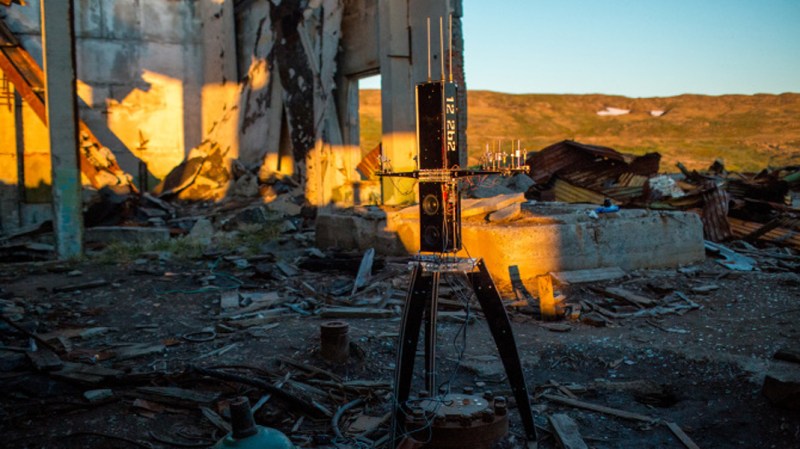In the 1970s, the Soviet Union decided to dig a hole for science. Not just any hole, the Kola Superdeep Borehole reached a depth of over 12 kilometers, the deepest at the time and the second deepest today by just a few meters. Since this was one of the few holes dug this deep that wasn’t being drilled for oil, the project was eventually abandoned. [Dmitry] was able to find some core samples from the project though, and he headed up to the ruins of the scientific site with his latest project which produces musical sounds from the core samples.
The musical instrument uses punched tape, found at the borehole site, as a sort of “seed” for generating the sounds. Around the outside of the device are five miniature drilling rigs, each holding a piece of a core sample from the hole. The instrument uses the punched tape in order to control the drilling rigs, and the sound that is created is processed by the instrument and amplified, which creates some interesting and rather spooky sounds. The whole thing is controlled by an Arduino Mega.
Not only does the project make interesting sounds from a historically and scientifically significant research station and its findings, but the project has a unique and clean design that really fits its environment at the abandoned facility. The other interesting thing about this project is that, if you want to make the trek, anyone can go explore the building and see the hole for themselves. If you’re wondering about the tools that could be used to make a hole like this, take a look at this boring project.

















not much detail on the build… i’d really like to know more about the tape reader design!
I’m no expert but it doesn’t sound like the tape reader is anything complicated. He just uses the holes in the tape to determine when to start and stop each of the drilling rigs, which are the instruments via piezo microphones.
@Nicholas – tape reader functionality is actually pretty complicated and detailed, both from a mechanical and electrical perspective. currently there is no open source build of a tape reader that can be generically build by anyone…
The article says paper tape, with holes. For those there are a lot of diy, open source or not, projects. Like a punch card reader.
You are thinking about magnetic tape, that is another very different thing.
link me to one paper tape reader project that has both mechanical and electrical functionality with documentation/parts that can A) be replicated and B) can be interfaced with a TTL system
@prpplague
I’d start with a web search for “punched tape for radiosonde”, since weather radiosondes shipped with paper tape containing the serial number. I’m holding one in my hand right now. And use that as a starting point.
@prpplague
One of the first hits was this:
https://www.instructables.com/id/DIY-Paper-TapePunch-Card-Maker-and-Reader/
The code ( http://pastebin.com/D9ZdHQsg ) is for a “Parallax Propeller board”, but if you read it, I don’t see much difficulty in migrating it to any other platform with enough GPIO pins. If you want to generate TTL, you could use arduino uno.
It is a nice setup, use a bunch of LEDs and photoresistors to migrate the holes, cardboard to ones and zeros. If fact you could make a really nice pair of boards with SMD photoresistor and SMD LED’s.
@prpplague And if you need mechanical feed just add a stepper motor driving a wheel with sprockets spaced for the tape. search for “driving a stepper motor with an arduino” for example code.
@truth yea my statement was “link me to one paper tape reader project that has both mechanical and electrical functionality with documentation/parts that can A) be replicated and B) can be interfaced with a TTL system”
the one you linked does not include a mechanical feeding the tape. there are a lot of examples of creating electronics to read the holes and examples like the one you linked, however none of them are a functional system that you could easily build.
the whole reason i made the comment about the tape reader is the fact that i HAVE been researching this for some time, and build a half dozen prototypes…
I know you’ll find something wrong with this one, but that’s life. You won’t always find the perfect example. You find something close and then adapt it. https://www.embecosm.com/2017/08/02/building-a-punched-tape-reader-for-chip-hack/
I got bored half way through…
:eek: that far? Did anything happen?
-1
Tape readers were a hot item back in the 8000 days. Look in old issues of Byte. Homebrew and start-ups making things.